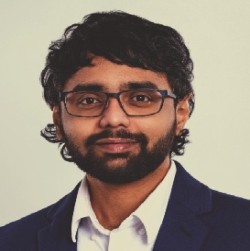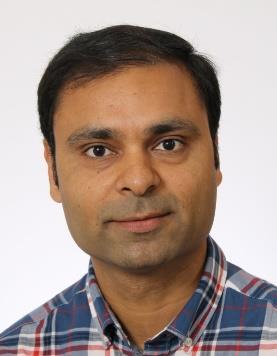Aligned Diffusion: Building Controllable, Robust, and Scalable Generative AI

Dr. Vishnu Lokhande
Date : 22/8/2025
Abstract:
Over the past few years, diffusion-based generative AI has transformed how we create images and multimodal content, yet alignment of these models with human goals remains poorly understood. Unlike language models, where failures are obvious, misalignment in diffusion models is subtle outputs are high-dimensional, stochastic, and judged by imperfect metrics rather than direct human feedback. Early work has focused mainly on filtering unsafe content, but the deeper challenges lie in enabling precise user control, ensuring robustness under real-world variability, and scaling models to new tasks and data without breaking alignment. This talk outlines a research agenda centered on three thrusts. Controllability: engineering fine-grained, object- and attribute-level steering mechanisms that go beyond coarse prompt editing. Robustness: designing alignment strategies resilient to domain shift, adversarial manipulation, and confounding data sources. Scalability: building continual learning frameworks that allow diffusion models to adapt and integrate heterogeneous data without catastrophic forgetting. Medical imaging provides a compelling proving ground: generating full 3D scans from limited input or allowing radiologists to explore “what-if” scenarios could revolutionize diagnosis and treatment planning, but only if models are trustworthy and adaptable. By tackling controllability, robustness, and scalability together, this work aims to turn diffusion-based generative AI into reliable, human-aligned systems for both biomedical and creative domains.
Bio:
Vishnu Lokhande is a tenure-track Assistant Professor in the Department of Computer Science and Engineering at the University at Buffalo (SUNY), where he is also affiliated with the Institute of Artificial Intelligence and Data Science. His research lies at the intersection of computer vision, machine learning, and optimization, with applications spanning biomedical imaging, foundational models, and large-scale representation learning. Vishnu earned his Ph.D. from the University of Wisconsin–Madison under the guidance of Prof. Vikas Singh, and holds a bachelor’s degree from IIT Kanpur. His work has received Oral/Spotlight recognition at top-tier venues such as NeurIPS, CVPR, and ICLR, and he has conducted research at Google Brain (now deepmind), Microsoft Research, and Adobe.
Real-time Snow and Cloud Animation in Computer Graphics

Dr. Prashant Goswami
Date : 06/06/2025
Abstract:
Physically based simulation methods are important in several domains, including computer graphics (CG), to capture the accurate behavior of materials. Snow and cloud animation methods are required in many applications. Snow simulation, for instance, is of interest to companies developing snow-ploughing vehicles or to authorities dealing with road cleaning/maintenance. Similarly, cloud animation has applications in designing realistic virtual flight simulators, etc. A key limitation in snow or cloud solvers in the base field (civil, physics, agriculture engineering) is efficiency. The existing solvers are targeted to achieve high accuracy, which makes the computational time last hours, weeks, or even months.
In this talk, Dr. Goswami briefly introduced the contributions of his work at Blekinge Technical Institute (BTH) at Karlskrona in the field of efficient snow and cloud simulation in CG. With the help of a Graphics Processing Unit (GPU) and efficient parallel models, he developed a snow solver that can run at high frame rates. Their solution could be useful to applications that desire real-time response from snow physics with a trade-off in accuracy. They have also proposed the use of Artificial Intelligence / Machine Learning to animate clouds to the end of realistic and efficient cloud animation. Dr. Goswami and team aim to further develop our strength areas in collaboration with the industry by jointly working on problem-solving, which they might also be interested in.
Bio:
Dr. Prashant Goswami is an Associate Professor (Biträdande Professor) in the Department of Computer Science (DIDA), falling under the Faculty of Computing at BTH (Blekinge Institute of Technology). He started here as an Assistant Professor (Universitetslektor) in November 2014, and obtained the title of Docent in 2021 (eq. to Associate Professor). He obtained his B. Tech and M. Tech (dual degree) in Computer Science and Engineering from the Indian Institute of Technology (IIT), New Delhi (2000-2005). After spending two years in the industry, he started his PhD at the University of Zurich in July 2007. He successfully defended his dissertation titled "Level-of-detail and Parallel Solutions in Computer Graphics" in December 2011. He spent little more than a year as a Research Fellow at the gameLab at Nanyang Technological University, (NTU) Singapore (March 2012 - April 2013), where he worked in the field of geometric modeling. He was a postdoc at the MAVERICK group at INRIA, Grenoble (August 2013 - November 2014), where he focused on real-time landscape-size convective cloud simulation before moving to BTH.
Homepage: https://prashantgos.github.io/
Publications: https://prashantgos.github.io/Publications.html
Google Scholar Profile: https://scholar.google.com/citations?hl=en&user=TGmVSaQAAAAJ
Learning Co-speech Gesture Representations

Sindhu B. Hegde
Date : 11/04/2025
Abstract:
Humans gesture when they speak -- gesturing is an integral part of non-verbal communication. Yet, large-scale understanding of co-speech gestures remains relatively underexplored. In this talk, I will delve into different approaches for learning co-speech gesture representations, highlight key challenges, and outline promising directions to advance gesture understanding in real-world, multimodal settings.
Bio:
Sindhu Hegde is a second-year PhD student in the Visual Geometry Group (VGG) at the University of Oxford, supervised by Prof. Andrew Zisserman. Her research is in Computer Vision, particularly in multimodal learning, video understanding, and self-supervised learning. Prior to joining Oxford, she worked as a Lead Data Scientist @ Verisk Analytics. Before that, she pursued a Master’s by Research (MS) at Centre for Visual Information Technology (CVIT), IIIT Hyderabad, supervised by Prof. C V Jawahar (IIIT-H) and Prof. Vinay Namboodiri (University of Bath, UK). Her Master’s research focused on exploiting the redundancies in vision and speech modalities for cross-modal generation.
Sounds of Pouring

Piyush Bagad
Date : 09/04/2025
Abstract:
What can possibly be scientifically interesting about such a mundane chore as pouring a liquid into a glass? We perform this action all the time but barely realise that we effortlessly learn to infer several useful physical properties in the process. For example, evidence in psychoacoustics suggests that humans can accurately infer the level of the liquid, the time to fill, the size of the container, and even the temperature of the liquid merely from the sound of liquid. How do we do it? What is the physics behind pouring? How can we use it to train an audio model to predict some of these physical properties solely from the sound of pouring? I will answer these questions in the talk.
Bio:
Piyush is a PhD student at the VGG lab in Oxford. He is supervised by Prof. Andrew Zisserman. His interests lie in time-sensitive multi-modal video understanding. Previously, he did his Master’s in AI at the University of Amsterdam. He has also worked as a Research Fellow at Wadhwani AI in Mumbai.
Model Compression (Pruning and Quantization Strategies)

Dr. Srinivas Rana
Date : 02/04/2025
Abstract:
Model compression, focusing specifically on pruning and quantization strategies, is an essential topic in machine learning. As machine learning models become more complex and resource-demanding, exploring ways to make them more efficient without sacrificing their performance is crucial. Pruning and quantization are two key techniques that help reduce the size of models, improve inference speed, and lower resource consumption, making them more suitable for deployment on edge devices or in environments with limited computational power.
Bio:
Dr. Srinivas Rana is currently a Senior ML Scientist at Wadhwani AI, where he leads a portfolio of healthcare solutions pertaining to screening or diagnostics across diverse domains. Previously, he was working in the UK with different organizations in the field of medical devices and life sciences. He holds a PhD from IIT Madras.
